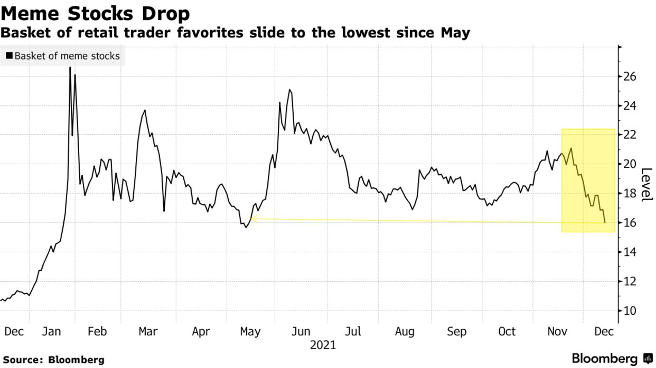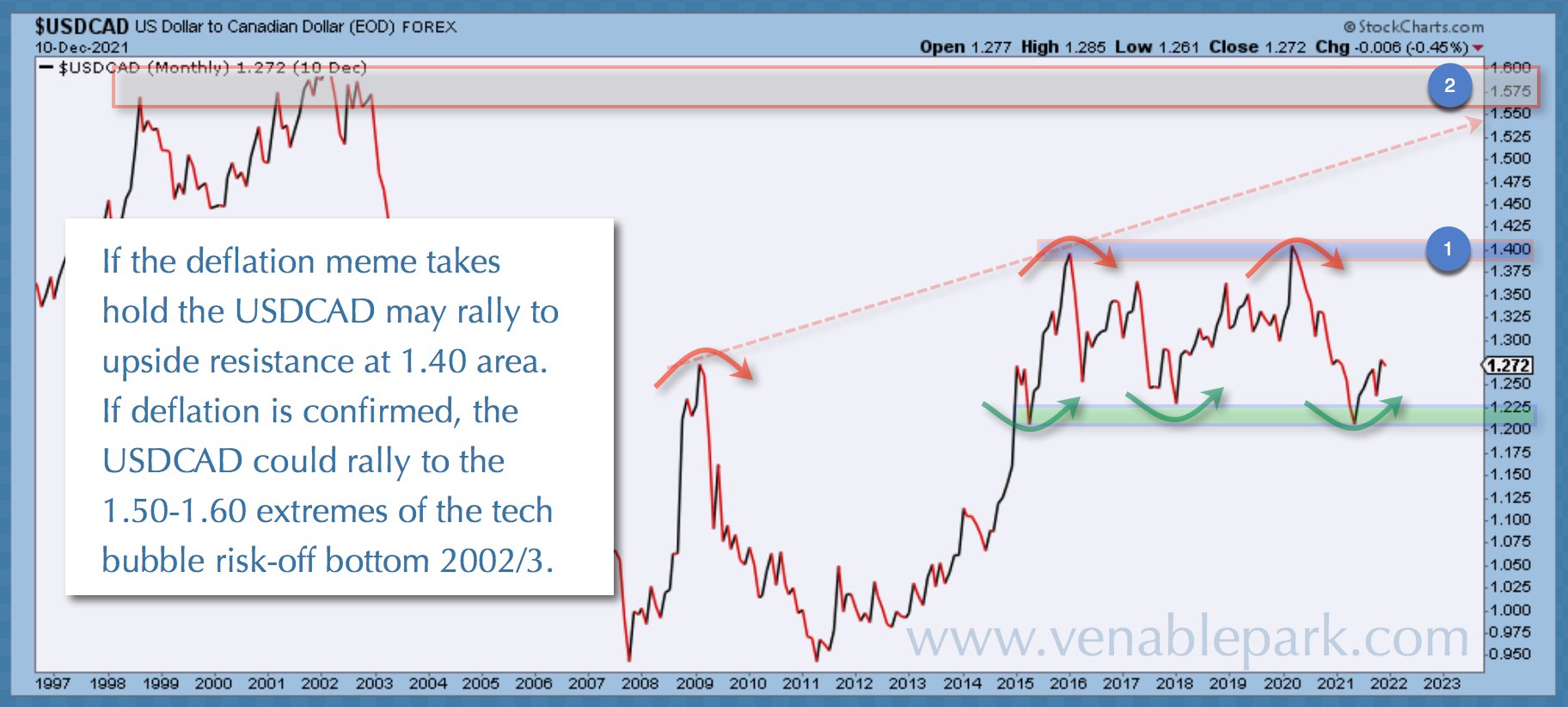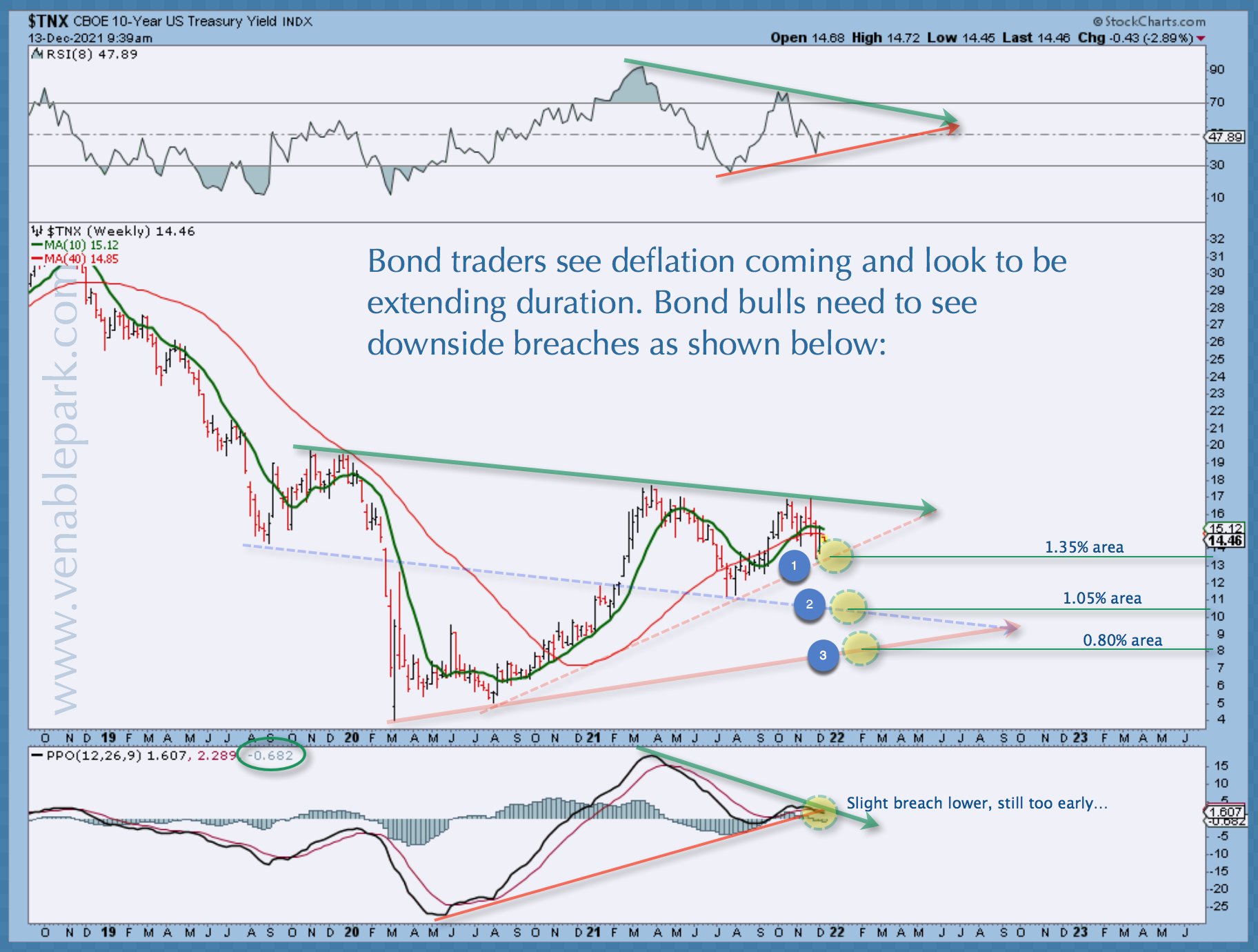The last 18 months have been the zenith of two decades of monetary madness and speculative mayhem. For the few possessed of fundamental and historical context, conditions have been both amazing and disturbing to behold.
Fear of missing out (FOMO) is a form of mental illness when it diverts focus and capital from time-tested first principles of risk management and financial prudence towards gambling and self-destructive behaviours. As typical, the throng knows not what they do. But most damaging, those trained and paid to know better have abandoned their duty of care, funnelling capital into asset bubbles with reckless abandon.
It is time, once more, for agonizing reappraisals.
The IPOX SPAC index, a mix of 50 SPACs and De-Spacs (another marketing euphemism for junk), is, so far, down 32% from its 2021 peak.
The basket of so–called “meme“ stocks–37 retail trading favourites tracked by Bloomberg–has lost nearly 25% of its value over the past three weeks and is now back to where it was last January, as shown below.

While the Goldman Sachs index of profit-less U.S. tech stocks has lost more than a fifth of its value over the past month–mean-reversion here is barely begun.
Following the risk-off trade, most global commodities are also sharply below their springtime peak. With default contagion spreading through Chinese property developers (some of the largest globally) and the China Real Estate Index already at a 5-year low, commodity demand is less robust than commonly forecast. Today, the IEA sees global oil markets back in oversupply by early 2022. WTI (West Texas Crude), already down 16% since October, appears to have gotten this memo weeks ago, and before the latest and most contagious COVID variant further damps travel plans.
The U.S. Fed drives with its rear-view policy mirror, but commodity currencies are already giving up on the ‘inflationary’ ghost. As shown below from my partner Cory Venable, after bouncing off $1.20 in June for the third time since 2015, the U.S. dollar is through C$1.28 this week. International capital flows seeking liquidity and shelter from melting asset bubbles make further greenback gains against commodity currencies a base case. 
Ditto for North American government bonds. As shown below, since 2018, the U.S. 10-year Treasury yield is back below 1.50, with the next test in the 1.35 area as safety-seeking inflows continue to boost treasury prices.
 The misplaced confidence of asset-heavy, cash-light participants is deeply entrenched. But it will melt with their misallocated capital. Of that much, we can be sure.
The misplaced confidence of asset-heavy, cash-light participants is deeply entrenched. But it will melt with their misallocated capital. Of that much, we can be sure.



